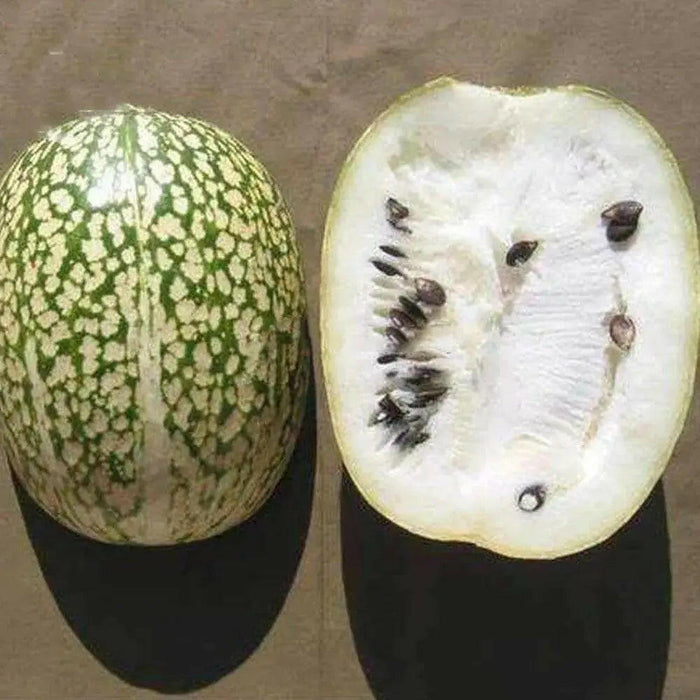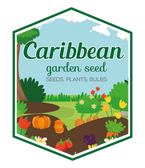
Chilacayote Seeds - Fig Leaf gourd - Shark Fin squash,
- Get free shipping to lower 48 states on orders $54.95+ (Most Items), excluding live plants, plant bulbs, and black plastic nursery crate.
- Most orders are processed by the next day !
- Safe Seed Pledge
- Select your desired size and/or color from the available options.
Chilacayote Seeds, also known as Figleaf gourd or Shark Fin squash, originates from Latin America. It produces edible fruit, seeds, and greens, with cream-white skin and green stripes. The flesh turns noodle-like when cooked, making it a popular ingredient in Asian soups and diabetic-friendly dishes. It is also a common ingredient in jams and jellies.
This gourd is commonly known as the Fig Leaf gourd due to the resemblance of its leaves to those of a Fig tree. It is also known as Malabar gourd, as it is grown along the Malabar coast of India, and as shark fin melon, as it is a substitute for shark fin soup. It is popular in Latin American, European, and Asian countries.
Chilacayote has numerous applications, including those for nutrition and cooking.
The Chilacayote squash is versatile and can be used both raw and cooked. It is best enjoyed boiled or baked, and can even be used in its immature form when the rind is soft and easy to work with. Similar to zucchini, it can be sliced, sautéed, or stuffed after boiling. As it matures, the rind of the Chilacayote squash becomes tough and requires a sharp knife for cutting.Chilacayote is commonly used to make dulce de chilacayote, a popular confection in Central America. Chilacayote flesh can be eaten like spaghetti or used in a pineapple or sweetened milk drink.
Chilacayote seeds can be eaten roasted, and pair well with leeks, onion, garlic, pepper, mushrooms, millet, quinoa, tomato sauce, gruyere cheese, asadero cheese, orange, and lime.
Mature Chilacayote squash has a long storage life, earning it the nickname Seven Year melon. Even after years, the flesh remains fresh and may even grow sweeter. Younger Chilacayotes can be refrigerated for up to two weeks.
Chilacayote is primarily cultivated for its edible fruits. These young fruits can be prepared as a vegetable, similar to other cucumbers and squashes. In certain regions of Africa and South America, the plant's delicate leaves are also utilized as a vegetable.
Mature fruits' pulp is used for making jams, jellies, candies, and soups, as well as a shark fin soup substitute..
When roasted, Chilacayote seeds offer a delightful flavor and can be enjoyed as a snack, similar to peanuts. Once the peel is removed, the seeds are roasted and ground into a versatile mixture that can enhance the taste of many dishes.
The fruits and the seeds are also well known for their nutritious value and numerous health benefits.
In Europe, Fig Leaf Gourd is also used as an ornamental plant.
Warm season annual
Maturity: Approx. 90 days
Planting season: Late spring/Early summer.
-Grow in fertile, well-drained soil. -Sow seeds in late spring/early summer in a warm, sunny location. -Hill plant: Form soil into 1' diameter mound 3-4" tall, space 4-6' apart, plant 1-2 seeds on each mound. -Row plant: See chart for spacing info, keep soil moist, fertilize as needed. -Consider hand pollination and train vine to climb for air circulation and easy harvest. -Cure in the sun before storing after harvest.
LET OUR CUSTOMER SPEAK FOR US

![[Seeds] - Caribbeangardenseed](http://caribbeangardenseed.com/cdn/shop/files/gift-card-gift-card-1_1024x1024_dfa857db-9150-4315-a362-7f0bb3fb9c47_60x28.png?v=1722895789)











